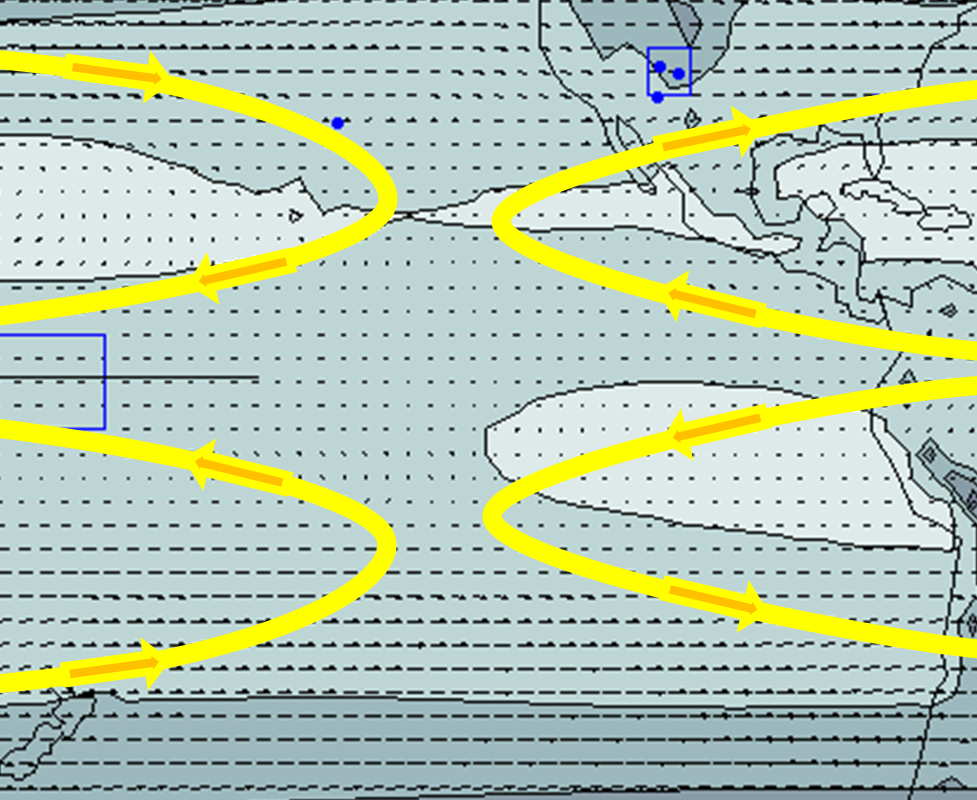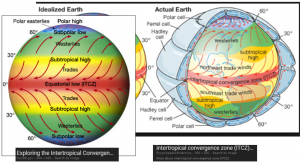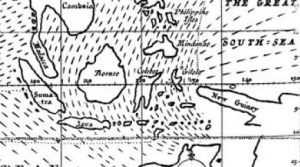The conventional narrative of Hadley-Walker circulation asserts that the atmospheric circulation converges more or less uniformly from mid latitude winds which are primarily directed eastward, towards the equator, where flow is largely to the west. This is known commonly as the Intertropical Convergence Zone (ITCZ).
Examples of Conventional ITCZ representations above.
From numerous previous investigations captured in posts at this site, evidence seems convincing that this assertion is not exactly true. Rather a most interesting circulatory dynamic is expressed in which convergence occurs along a western equatorial Pacific meridional band, and divergence occurs within a western equatorial Atlantic to eastern equatorial Pacific meridional band. Were it not the case, then such common features as gyres and Atlantic hurricanes would not be observed.
But those are only a small fraction of the evidence at hand. My preliminary findings are based as usual on geostrophic principles, which average the worlds’ atmospheric and ocean circulations over their respective thicknesses. The featured image is a simple concept sketch and I will provide some more detailed and data based images here soon, including an overlay with ocean circulation and with atmospheric moisture as food for thought. I will also eventually develop data based vertical circulation (meridional overturning) plots but that is for a longer term project. Given that cyclonic features reach largely through the entire atmosphere thickness, the geostrophic approach should stand up for the most part even in light of the vertical circulation aspect.
The questions of intertropical atmospheric circulation have challenged scientists for centuries. Relatively comprehensive descriptions were already mapped by the 17th century CE. As one example, the following image was cropped from a publication by E. Halley (1686) [1] as related at: http://blogs.royalsociety.org/publishing/files/Halley.jpg
By the time of that publication, seafarers had developed decades of relatively accurate records of trade winds across the planet’s tropical oceans. Moreover as related by historical research such as that of Persson [2], a robust and diverse complement of investigations by many notable scientists had begun and continues to this day. However, as far as I’ve been able to determine from detailed review of numerous contemporary papers, none have identified the consistent pattern of Convergence and Divergence shown here. The data is clear and has been there for any to confirm.
Recent posts which point to divergence and convergence associated with the ITCZ:
Hurricanes, Gyres and Forecasting Performance
I have another post which is actually titled the QG Intertropical Convergence Zone, but it focuses on a different but equally striking aspect of this geographical boundary. That concerns the remarkable stationarity of these patterns.
[1] Halley, Edmond, 1686, “An Historical Account of the Trade Winds, and Monsoons, Observable in the Seas, Between and Near the Tropicks, with an Attempt to Assign the Phisical Cause of the Said Winds” Philisophical TRANSACTIONS, 1686-1692 16, 153-168
[2] Persson, Anders O., 2006, “Hadley’s Principle: Understanding and Misunderstanding the Trade Winds”, History of Meteorology 3 (2006) Swedish Meteorological and Hydrological Institute.
http://www.meteohistory.org/2006historyofmeteorology3/2persson_hadley.pdf
Many thanks to the Las Cruces Atmospheric Forum as well.
 13867total visits,7visits today
13867total visits,7visits today


